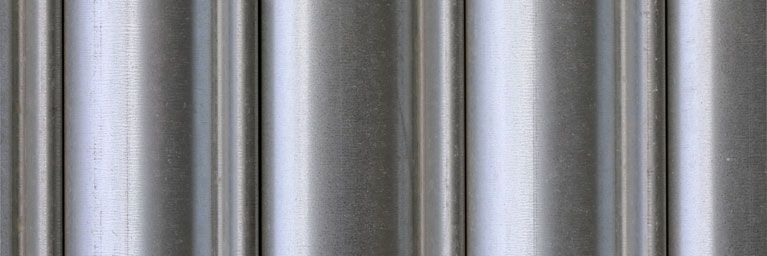Shop Now
- Welding Consumables
- Welding Torches & Torch Spares
- Welding Machines
- Plasma & Cutting Machines
- Welding Machine Spare Parts & Accessories
- Welding Fume Extraction Equipment
- Gas Welding Equipment
- Welding Abrasives
-
Welding Safety Equipment
- Welding Helmets
-
Welding Helmet Spares
- Speedglas Spares
- Betaweld Spares
- Cigweld Spare Parts & Accessories
- Flip Front Helmet Spares
- Jackson Spares & Accessories
- Lincoln Electric Spare Parts & Accessories
- Miller Spares & Accessories
- RPB Spares
- Servore Spares
- Unimig Spare Parts & Accessories
- Weldclass Spares & Accessories
- Miscellaneous Helmet Lens
- Welding Gloves
- Protective Workwear
- Welding Blankets
- Welding Screens & Curtains
- Ear Protection
- Eye Protection
- Face Protection
- Hand Protection
- Head Protection
- Respiratory Protection
- Sun Protection
- Hydration Products
- Fire Blankets
- Prestart Books
- Safety Signage
- Safety Tags
- Welding Accessories
- Pipe Welding Equipment
-
Cutting & Drilling
- Bandsaws
- Bandsaw Blades
- Bandsaw Accessories
- Coldsaws
- Core Drills & Accessories
- Cutting & Milling Blades
- Diamond Blades
- Drill Bits
- Holesaws
- Magnetic Base Drills
- Metal Working Lubricants
- Pipe Bevelling
- Pipe Cutting Equipment
- Pipe Tee Pulling Kits
- Pipe Threading Machines
- Plasma Table Water Additives
- Punching Machines
- Welding Merchandise
- Gift Cards
- Clearances
-
Hire
- Hire Equipment
- Hire Heating Equipment
- Hire Degausing Equipment
- Hire a Welding Positioner
- Hire a Turning Roller
- Hire a Diesel Welder
- Hire a Wirefeeder
- Hire a Multi-Process Welder
- Hire Accessories
- Hire a MIG Welder
- Hire a TIG Welder
- Hire a Stick Welder
- Hire a Plasma Cutter
- Hire a Weld Cleaner
- Hire a Stud Welder
How to MIG Weld Stainless Steel
MIG welding stainless steel is challenging because this material retains heat and can distort and lose its corrosion resistance if kept at elevated temperatures for too long.
However, if you set your equipment correctly and minimise heat input, you can achieve strong, good-looking stainless steel welds.
Pre-Cleaning the Stainless Steel
Clean the welding joint from contaminants like paints, oil, grease, primers, cutting compounds, waxes, pencil marks, soap, and other hydrocarbons. Such contaminants can introduce carbon into the weld, impair corrosion resistance, and weaken the joint.
Use a dedicated stainless steel brush to clean the joint. Don't use tools that were previously used on mild steel because that's a sure way to cross-contaminate these two metals. Mild steel particles contain higher carbon content that can negatively impact the stainless steel welds.
Controlling the Heat Input
To avoid compromising corrosion resistance or warping the stainless steel, you need to control the heat input. One of the best ways to reduce heat input while maintaining adequate penetration is using a pulsed MIG welding process.
Pulsed MIG welding reduces spatter, improves weld appearance, and reduces heat input, which is especially important when welding thin stainless steel. Alphaweld offers the Weldmax 220, a pulsed MIG, pulsed DC TIG, and MMA-capable multi-process, inverter-based welder. The Weldmax 220 is lightweight, portable, and outputs up to 200A. However, if you need to weld very thick sections, the Weldmax 355i is a better recommended choice. The Weldmax 355i supports the same processes as the Weldmax 220, but it can weld with up to 350A output.
It's also advisable to limit the weld metal size to only what's necessary. A lower weld metal volume reduces the shrinkage stresses, which helps avoid distortion. You can also use copper chill bars to help conduct some concentrated heat away from the stainless steel joint.
Shielding Gas
The two most commonly used shielding gases for MIG welding stainless steel are an Argon mixture with 2% oxygen and a Tri-mix of 90% helium, 7.5% argon, and 2.5% carbon dioxide. Avoid using a standard MIG gas for mild steel, like 75/25 Ar/CO2 mixture or pure CO2. These gasses have excessive carbon content, which will result in poor stainless steel welds.
MIG Wire Selection
The MIG wire should match the type of stainless steel alloy you are welding. For example, you should use a ER316LSi wire to weld 316/316L stainless alloys. But, if you are working with a stainless alloy that doesn't have an equivalent filler metal in production, you can use a wire with a higher alloy content. Therefore, a ER308LSi wire can be used for 302, 304, 304L, 305, and 308 stainless steels.
Travel Speed and MIG Torch Angle
MIG welding stainless steel requires a relatively fast travel speed to avoid heat concentration that can result in material distortion and corrosion. Use a push technique instead of dragging the MIG torch. Pushing the gun along the joint can improve puddle wetting and weld appearance. Additionally, avoid a weave motion and use a stringer (straight line) bead. The stringer bead works well to reduce the chances of carbide precipitation, especially when joining stainless steel pipes.
Get in Touch with Alphaweld Experts
It's challenging to achieve maximum weld quality when joining stainless steel alloys. However, our experts at Alphaweld are ready to assist you in choosing the most appropriate MIG welding equipment and filler metals for your application. To speak with our team, give us a call on (08) 9456 8000 and we'll gladly assist you.


